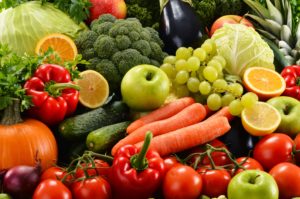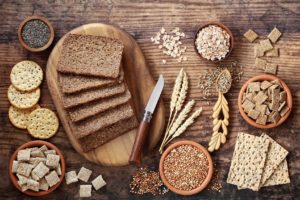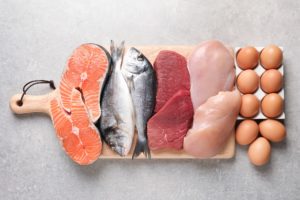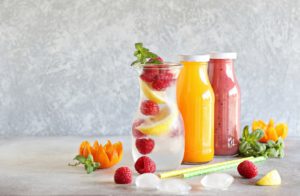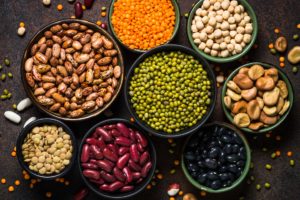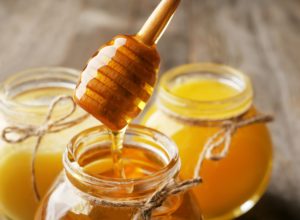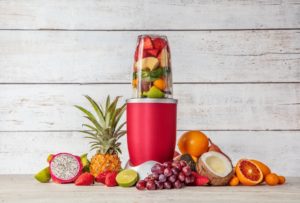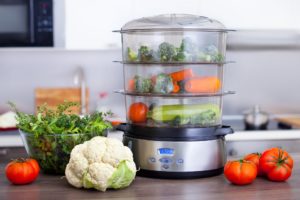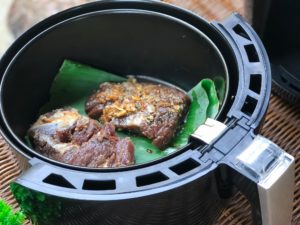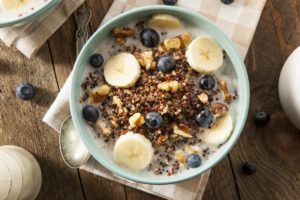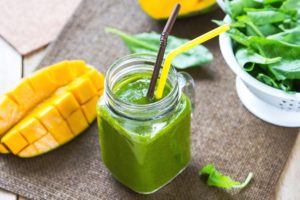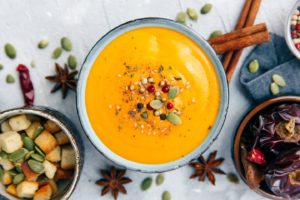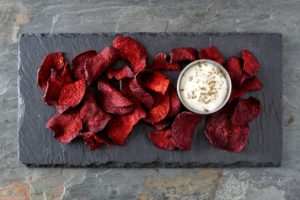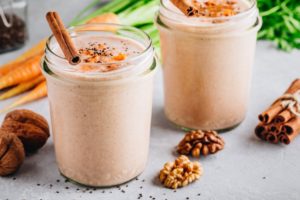Wanna join our JERF challenge? Just Eat Real Food and experience the benefits.
There are many diets with varying rules, but most healthy options are grounded in similar foundations. Of course, you will see fad diets everywhere with wild promises and extreme measures that might even trigger binge episodes and a rebound weight gain afterward. But I have found that most people feel more comfortable with nutritional counselling when they are given recommendations and feel free to adapt them to themselves.
That is what we found in the JERF diet, an acronym for “Just Eat Real Food.” The concept is easy to grasp and apply in your daily life. At the end of the day, that’s precisely what you want in a new diet: a new way of relating with food that brings about lasting results and can be maintained without much struggle for as much as you want.
In this article, we’re telling you why this JERF approach to dieting turns the experience into an easy-going and sustainable method to lose weight and stay healthy.
What classifies as “real food”?
We often need to translate scientific terms into day-to-day jargon, and the concept of real food is an example. Anything you eat is real, not imaginary, but what we want is food that comes directly from natural sources. As fresh as possible and without processing. The problem is that processed foods add several chemicals and takes out valuable nutrients at every step of the road.
The scientific term would be nutrient-dense foods, which are basically fresh foods and whole foods that provide a very high proportion of nutrients for each calorie. For example, fatty fish like salmon, liver, sardines, seaweed, kale, eggs, and berries.
You can call it real food, clean food, whole food, fresh food, or nutrient-dense food. It’s up to you.
A motivation to change
Any change in our lifestyle and eating pattern should be motivated by solid facts. Otherwise, it will be a temporary change and won’t have long-lasting results. That’s why I love talking about the importance of real food in our lives.
Food is one of the primary fuels in the organism. You wouldn’t fuel your car with a gas-like product. You use gas and probably choose a high-quality type. Similarly, the human body can be fueled by inadequate foods or high-quality nutrients.
Only real food will make your body work as intended:
- You’re not meant to gain excess weight, and real food will keep your body fat in a healthy balance
- You’re intended to have a balance between fat mass and lean (muscle mass). Real food improves your body composition and favours muscle toning.
- Your brain is designed as a powerful machine with unlimited capacity. Real food provides energy and prevents decay in this complex organ.
- Your hormonal system is intended to keep your chemical balance. By providing the building blocks, real food supports your hormones, keeping them at normal levels.
- The gastrointestinal tract is made to absorb food from natural sources. Real food has nutrients in the right proportion and promotes absorption.
- Your metabolic system is meant to store energy and make it available when it is needed. Real food increases your energy levels without contributing to excess fat weight.
- Neurotransmitters make up an essential part of body chemistry, and real food provides the materials to maintain the right proportion and contribute to your mood.
- Food can facilitate sleep or make it difficult for you, depending on what you eat before bedtime. Real food is easier to digest and won’t give you problems falling asleep.
- Exercise, muscle repair, and recovery are a part of the natural process in muscle growth and training. Real food is nutrient-dense and speeds up the process, helping you recover more quickly after working out. You will also boost your exercise performance and enjoy practical workout sessions.
- Your skin and personal appearance depend on what you eat. Real food will give you a healthier skin glow and a fresh look
- With all of these benefits, real foods contribute to your health, giving you a quality of life and extended longevity.
Real food white list
What foods do you want to include in this JERF diet?
- Fruits and vegetables: Fresh fruits and vegetables are on top of the list. They contain dietary fibre, plenty of vitamins, and minerals.
- Whole grains: There is a variety of grains on the white list, including quinoa, barley, corn, and amaranth. If you’re eating rice, make sure it is whole-grain rice.
- Meat and fish: Seafood is an excellent option, and chicken is also delicious. If you’re eating beef and pork, prefer humanely raise productions.
- Beverages: Water is always essential, but you can also drink natural smoothies, juices, homemade fruit water, and tea. Avoid adding refined sugar.
- Legumes: They are excellent sources of vegetable protein and complex carbs. You can eat everything, including lentils, peas, beans, and much more. I prefer dry legumes instead of canned food.
- Dairy: Milk, cheese, and dairy are included in the white list, but only in limited quantities.
- Sugar sources: The most appropriate sugar sources are honey and coconut sugar. It will be even better if you can avoid using them at all or limit their consumption to minimum quantities.
In the grocery store
Follow these recommendations to maximize your results and facilitate your experience:
- We recommend taking dairy products out for the JERF challenge for at least 21 days. This will contribute to detox and cleanse your organism, facilitating the function of the digestive tract. Removing dairy products would be ideal, but trying to serve a minimum serving if that feels difficult for you. Look for less-processed variants.
- This diet is very versatile. You can make small changes to follow a Paleo-like diet or a vegan diet. For example, if you remove all dairy and animal proteins, you will follow a vegan diet. If you want a Paleo diet, just remove the grains from the white list. You could also choose gluten-free products if you’re a celiac patient. Everything is valid as long as you’re eating real food.
- Local produce and organic products are often healthier because they are not as processed and do not require extending shelf life with unknown chemicals and additives.
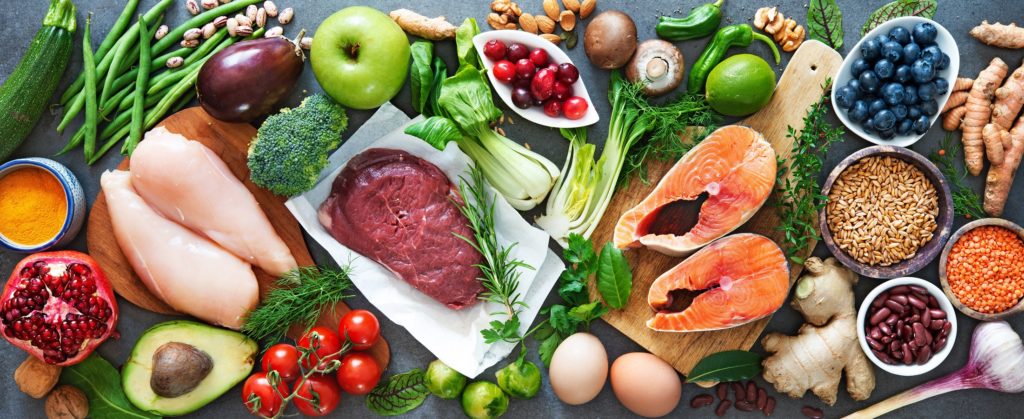
What materials and equipment do you need for this diet?
Preparation is essential to make a diet genuinely healthy. You could choose fresh ingredients and prepare a tasty salad, but spoil everything by frying your ingredients or adding processed salad seasoning full of sodium and fat.
Healthier cooking methods may require some equipment. This is highly variable and depends on your taste and plans for the diet, but we could recommend the following tools:
- A smoothie maker: It can be the regular countertop blender or a personal smoothie blender. Each one has its own advantages, and you could also have both.
- Steamer: Steaming is an excellent cooking method if you want to maintain the nutrients in foods without adding any oil. It is also helpful if you want to heat your foods and preserve their moisture.
- Electric Grill: The George Forman type of grill or another similar option may come in handy to cook meat and sandwiches quickly and without adding oil or butter. A good BBQ with a grill (not a plate) is an excellent option too.
- Air fryer: It is another alternative to avoid deep frying. You could even have healthy French fries cooked in an air fryer.
Meal sample
With this in mind, let’s review some food samples. That way, you will know what to expect from this diet. You could eat these foods in one day:
- Gimlet: If you’re looking for an easy alternative to our beloved Gin and Tonic, why not a Gimlet.
- Green & Glorious Smoothie: So simple but so full of healthy goodness and flavour.
- Butternut Pumpkin and Sweet Potato Soup: Fresh and colourful, this soup is perfect any time of the year.
- Beet Chips: These beet chips are about as simple as it gets: 30 minutes, 4 ingredients, 1 pan.
- Cambodian Fish Curry: A colourful and delicious curry for all seasons. Cambodian Fish Curry is a winning dinner party dish which is simple and can be prepared prior to guests arriving.
- Carrot Cake Protein Smoothie: Packed with goodness and absolutely delicious. How could you go past a Carrot Cake Smoothie?
Tips and recommendations
If you want results, adjusting your diet is no more than the first step. Follow these tips and recommendations if you’re going to speed up the benefits.
Always remember to combine diet and exercise
A healthy diet with fresh foods has the benefits listed above, and exercise is the perfect complement. If you want to lose weight as one of your goals, it is fundamental to have a physical exercise routine to see the benefits and feel better.
Exercise is not necessarily daily CrossFit classes or two hours of cardio. You can go at your own pace, with a 20-minute and then 30-minute walk, a home stretching routine, and lifting weights.
Adjust your mindset
Most of us need to revise our relationship with food. Ask yourself why do you eat and what attitude do you have when you’re eating. Can you recognize when you’re full and stop eating? Do you expect restrictions and hunger when you’re dieting?
Do not think about eating as something to avoid if you want to be fit. Instead of starving or having too much food, you can find a healthy path in the middle by adjusting your mindset and attitude.
Learn to read the labels
Reading the labels is probably the best advice I can give you. Nutritional tables might be difficult to understand at first, but you can start by noticing elementary facts. For example, look at the section “added sugars” and try to have all-zeros in this section. If you can’t have a zero, compare and look for the smaller number. Try to read the ingredients out loud and if you can’t pronounce them, take them back to the shelf. It is probably highly processed.
Learn to cook
People who cook their own food at home have a higher chance of following a healthy diet. You will have more control and make sure that the preparation method is appropriate for your goals.
A recommendation for emotional eaters
If you’re an emotional eater and feel hungry when you’re anxious or feel sad, why don’t you replace chocolate bars and fried foods with real foods? If you like crunchy stuff, carrot sticks wrapped in turkey ham can be a good solution. You can try with nuts or a smoothie. Find your own combinations, flavours, and textures, but try to replace fatty foods and sweets as much as possible.
Frequently Asked Questions
Is this a strict diet? Any recommendation to adapt?
You don’t need to jump right away into fresh foods from the start. You can do it gradually, and this diet allows you to do so. Start by replacing ultra-processed foods, one meal at a time or one food at a time. Introduce new foods every day and learn new recipes in the way.
How do you choose your veggies?
There are different sources of vegetables available for you. The first place to look is your local grocery store, but it is not the only one. In larger stores and specialized places, you can find organic vegetables. They are better than the usual vegetables because no pesticides are used in the growing process.
Alternatively, and if you like gardening, you could even grow your own veggies at home. They will also be organic food for an affordable price.
Which fat sources are best for me?
The word fat does not usually have good connotations. But there are good and bad sources of fat. You have saturated and unsaturated fat and some unsaturated fats are particularly healthy. One example is the so-famous Omega-3. If you eat salmon, nuts, avocado, and olive oil, you will be eating healthy fats. Just stay away from the fatty portion of meat, which is one of the worst.
Can I consume sauces or seasoning?
Sauces and seasonings are not always a good option. Some of them are highly processed and contain saturated fats and excess sugar and salt. You can make your own sausages and salad seasoning using natural ingredients, but do not rely on anything that is canned or bottled.
If you’re about to start a 21-day JERF challenge or adopt this diet from now on, you may have your own questions. If you do, do not hesitate to join others like you in our Private Facebook Community.

